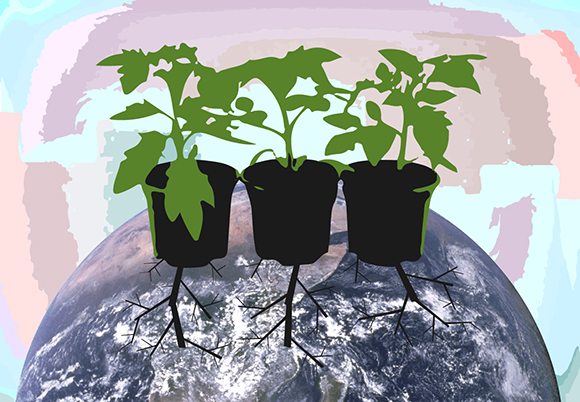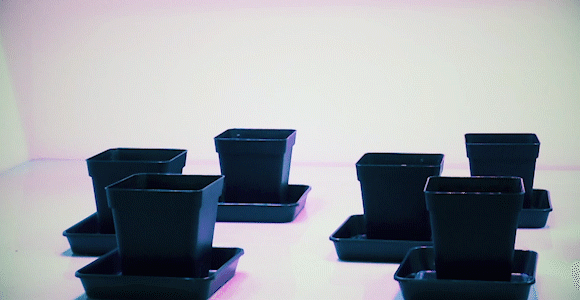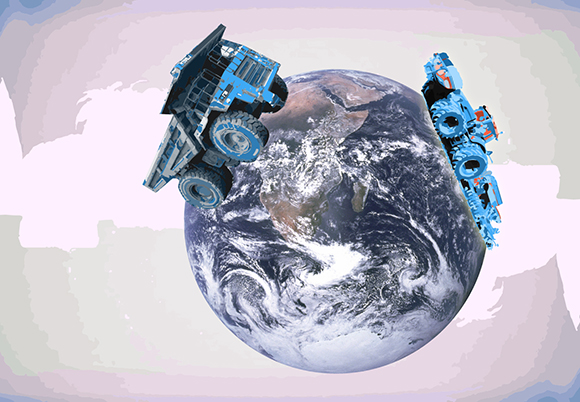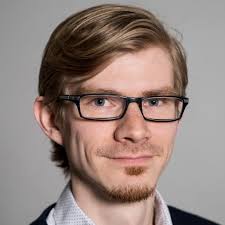
The battle for phosphorus is intensifying
Phosphorus is a very simple element that forms the foundation of all life on Earth. However, phosphorus is also a limited resource. Phosphorus is therefore also part of a game of geopolitics between superpowers that is intensifying these days.
You probably don’t give it a second thought, but every time you put food in your mouth, you are taking part in a power game of high politics.
Explanation:
All life requires phosphorus. The world's food is produced with the help of fertilisers containing phosphorus, and without phosphorus, the Danish agricultural sector, among others, would collapse within a very short time.
Fortunately, phosphorus is not in short supply right now, and farmers can get plenty of it to make everything from wheat to rape grow – at least a little more, because there are black clouds on the horizon.
Geopolitical power struggles
In the future, phosphorus may become the subject of bitter geopolitical strife.
To begin with, this is due to the fact that phosphorus is a limited resource and that 85 percent of the world's phosphorus is found in rocks in Morocco, Russia, China and the United States.
In a world that has been marked by trade wars and protectionism in recent years, it is not inconceivable that control of one of the most important natural resources on Earth will be used as a political weapon to threaten other countries to come to heel or stop interfering with internal national affairs.
”Addiction makes us vulnerable, because it allows individual countries to use the supply of phosphorus politically with an unspoken, but ultimate, threat to cripple agricultural and food production.
This is the dismal prediction from postdoc André Ken Jakobsson at the Centre for War Studies at SDU:
– In the EU, as an example, we are particularly dependent on having access to phosphorus from, among others, Russia and Morocco. That dependence makes us vulnerable, because it allows individual countries to use the supply of phosphorus politically with an unspoken, yet ultimate, threat to cripple agricultural and food production.

– The same problem applies to China, which deliberately uses trade sanctions against countries that criticise China's actions in Hong Kong, Taiwan or against the country's Muslim minority. Because phosphorus is a limited resource that only a few countries have direct access to, it is an essential element in the dispute over global supply chains, where countries become dependent on other countries with which they have major value and security conflicts, he says.
Plants cannot grow without phosphorus
Before continuing with the geopolitical quarrels, let’s take a moment to discuss why on Earth phosphorus is so important.
Plants need phosphorus to grow. It’s as simple as that. Phosphorus is part of a number of different biological molecules and processes, including the structure of genetic material and in the energy-containing ATP molecules that are responsible for all of biology's biochemical processes.
Since the birth of biological science, scientists have been experimenting with growing plants on a minimum of phosphorus, and those plants develop into weaklings that can barely keep themselves upright and are incapable of producing anything that we humans can feed on.

To prove their point, researchers from SDU have conducted a number of experiments to show how tomato plants grow with and without phosphorus. The difference is baffling.
Seen through a farmer's spectacles, it is therefore crucial to be able to spread fertiliser containing phosphorus in the farm fields, so that the wheat, maize, rape or potatoes can grow large and strong. At the same time, the phosphorus ends up being washed from farm fields, e.g. during rain events, so more and more is needed. While this is a burden for the farmer, it is, of course, good business for the countries that sell phosphorus.
– At the end of the day, it’s really simple. If the crops don’t get phosphorus, there is no agriculture. The entire global food production is dependent on phosphorus, explains Associate Professor Kasper Reitzel from the Department of Biology at SDU.
The world's mines can run dry
In the geopolitical power game, world leaders, like farmers, are aware of the importance of phosphorus, what it means not to have access to it, and what it means to sit on the few of the world's remaining resources.
Although no one can come up with an exact number, experts estimate that the world's mines will run out of the precious element in between 50 and 500 years.
It also means that the phosphorus-producing countries are already looking at how much they have left and how much they need to spend themselves.
No one has China over a barrel
– Most countries have become painfully aware that the global value chain can be broken, meaning that you suddenly find yourself in a situation where you need something that others are in control of.
– We saw this, for example, at the beginning of the corona crisis, where the whole world needed masks and other protective equipment that were only manufactured in a very small number of countries, says André Ken Jakobsson.
André Ken Jakobsson elaborates that the struggle for corona protection products represents an escalating conflict between the United States and the West on the one hand and China on the other. While the West has tried in a big way to open up world trade by, among other things, creating mutual dependencies, China has not reciprocated.
Right now, the EU and Denmark, among others, are therefore in a situation where they must reconsider strategically important dependencies on China, which is not as dependent on the West as before to keep its wheels turning.
”The EU broadly agrees that we must be strategically independent of not just China, but other countries as well.
Then we are back to the whole phosphorus problem, because no European head of state wants to be in a situation where the entire European food production and security is dependent on prime ministers and presidents tip-toeing around, among others, Russia and China, and being critical of them.
– The EU broadly agrees that we must be strategically independent of not just China, but other countries as well. The EU wants to develop a European strategic autonomy in certain core areas.
– This also means that we have to come up with solutions so that we are not dependent on phosphorus, which is extracted from mines on almost every continent but Europe, and where four countries sit on virtually the entire global production, says André Ken Jakobsson.
We’ve got too much and import even more
Here comes a twist that also points in the direction of a number of possibilities for the future:
In Denmark, phosphorus is not in short supply in most places. In fact, we have too much of it, for example, in Jutland, where phosphorus is washed away from the fields and ends up in streams, lakes and near coastal areas.
Danish phosphorus in a global perspective
- Every year, Denmark imports 50,000 tonnes of phosphorus, primarily from Morocco. Between 12 and 13,000 tonnes are used in animal feed, while the rest is spread as fertiliser in farm fields. /li>
- 30 countries produce the phosphorus used all over the world by mining it, but none of the phosphorus-producing countries are located in Europe. Four countries account for 85 percent of the world's phosphorus production. These countries are China, the United States, Russia and Morocco.
- China is the only one of the four countries to have chosen to protect its own phosphorus by regulating exports. That happened already in 2008.
- Most scientists agree that one day the world will no longer have the same easy access to phosphorus as it does today, but they disagree as to whether that day is 50 years or 500 years from now.
- Phosphorus has been on the EU's list of critical raw materials since 2014.
This in itself is a gigantic problem because phosphorus in the water causes microalgae in the water surface to grow uninhibited, preventing the Sun's rays from reaching the bottom where various aquatic plants grow.
Phosphorus must be recycled
In addition, the algae on the surface do not live forever, and when they die, they settle as suffocating algal mats across the bottom of the lake. Bacteria feast themselves on this smorgasbord and in the process suck all the oxygen out of the water.
Large amounts of phosphorus can therefore lead to both oxygen depletion and plant death on the bottom of lakes. This affects the wildlife, which the plants both for food and to hide in.
It’s a vicious circle, which especially in the summer creates enormous problems for biodiversity in the Danish lakes, when both animals and plants die.
Fortunately, researchers are trying to do something about it. SDU is collaborating with Aarhus University and the Technical University of Denmark on a large lake restoration project, which aims both to restore the original condition of Danish lakes and at the same time recycle the surplus phosphorus found in the lakes. The project is supported with almost DKK 20 million by Poul Due Jensen/the Grundfos Foundation.
”We’re in a situation where we lack phosphorus for food production, but at the same time have too much of it in the aquatic environment.
– We’re in a situation where we lack phosphorus for food production, but at the same time have too much of it in the aquatic environment.
– This is partly due to the unsustainable use of phosphorus in our society, and that we have yet to develop a circular economy around phosphorus, allowing us to recycle the phosphorus that is already in the system, instead of having to import it from Morocco and China, explains Kasper Reitzel.
Surplus in the Danish topsoil
If you only consider the amount of phosphorus that is in the Danish topsoil but not utilised because it’s so far down in the soil that it is inaccessible to plants, or cannot be utilised because it’s bound to various soil particles, Denmark has two to five tonnes of surplus phosphorus for every hectare of agricultural land.

There are differences between Jutland and Zealand due to the consumption of manure, but the sum total is that plants only need between 20 and 40 kilos of phosphorus per hectare to be able to grow optimally. Another places where Denmark has a lot of phosphorus that we do not utilise sufficiently, is in sewage sludge.
Sewage sludge wallows in phosphorus
Sewage water from Danish households and especially the food industry is filled with phosphorus. The problem is that you can’t just scatter it in the fields.
The bioavailability of phosphorus from sewage sludge can be very low compared to the bioavailability of phosphorus from fertilisers, and since there are restrictions on how much phosphorus a farmer is allowed to spread in his fields, he usually chooses the phosphorus that the plants can utilise as quickly as possible, namely phosphate, which is found in industrially produced fertilisers, which depend on imported phosphorus.
In addition, there are problems with the content of microplastics and other tedious substances in sewage sludge, and then the farmer is accustomed to industrially produced fertiliser, just as his production equipment is adapted to this type of fertiliser.
”A farmer in Denmark is allowed to fertilise his fields with 30 kilos of phosphorus per hectare, and since he often also fertilises his fields with manure, this removes the incentive to spread sewage sludge in the fields.
– A farmer in Denmark is allowed to fertilise his fields with 30 kilos of phosphorus per hectare, and since he often also fertilises his fields with manure, this removes the incentive to spread sewage sludge in the fields, because it would leave a lot of phosphorus in the fields with low bioavailability. Therefore, he would rather buy cheap and highly efficient fertiliser, explains Professor Haiyan Qu from the Department of Green Technology.
Problems must be approached from several angles
Haiyan Qu is researching the development of technologies that can extract phosphorus from, among other things, sewage sludge. She sees two possible ways to establish a sustainable phosphorus ecosystem in Denmark.
Firstly, legislation can force, for example, industry and treatment plants to minimise emissions by imposing taxes on phosphorus emissions. However, this could risk impeding Danish industry compared to competitors in the international market.
Another option is to develop cost-effective technology that can convert the hard-to-reach phosphorus from sewage sludge to readily available phosphorus, which can initially be sold to fertiliser producers and then to farmers.
For this to be possible, fertiliser producers must also be willing to accept the phosphorus coming from sewage water, and this will require a reorganisation of their production, which will initially also require investment in the production facilities.
The solutions must be connected
All this is not something we can do overnight, and it is especially difficult when phosphorus from, among others, Morocco remains so cheap.
– In order to create a sustainable ecosystem for phosphorus and make ourselves independent of other countries, we need to push a lot of buttons at the same time. This applies both within the legislation in not only Denmark, but also the EU.
– In addition, we must have the technology in place to gain access to some of the phosphorus that escapes with the sewage water. Finally, the fertiliser production industry must also receive the phosphorus that comes from the sewage water. It is possible to do all of these things, but we lack a few links to connect the solutions, says Haiyan Qu.
”We’re tackling the issue of being independent of phosphorus while doing something good for the environment from almost every conceivable angle
The holistic approach to solving the phosphorus problem is exactly what Kasper Reitzel are trying to do in a large research project named RecaP. In the project, Kasper Reitzel together with other researchers from SDU, have been granted a large bag of money from the Horizon 2020 Innovative Training Network to employ 15 PhD students around Europe. The PhD students will be doing interdisciplinary research into the phosphorus problem.
Some will be studying the societal perspectives such as legislation and behaviour, while others study the environment, such as lake restoration, and the sewage water sector.
– This is the first project of its kind, where SDU serves as the coordinator, and it’s going to be super exciting, because we’ll be doing a number of interdisciplinary courses.
– In addition, we’re also working on projects where we’re trying to develop filter materials that can bind phosphorus. We’re attacking the issues of being independent of phosphorus and at the same time are helping the environment from almost every conceivable angle, says Kasper Reitzel.
Meet the researchers

André Ken Jakobsson is a postdoc at the SDU’s Centre for War Studies at the Department of Political Science and Public Management.
Contact

Kasper Reitzel is an Associate Professor at the SDU’s Center for Lake Restoration (CLEAR) at the Department of Biology.
Contact

Haiyan Qu from the Department is Professor wsr at SDU Chemical Engineering at the Department of Green Technology at SDU.
Contact